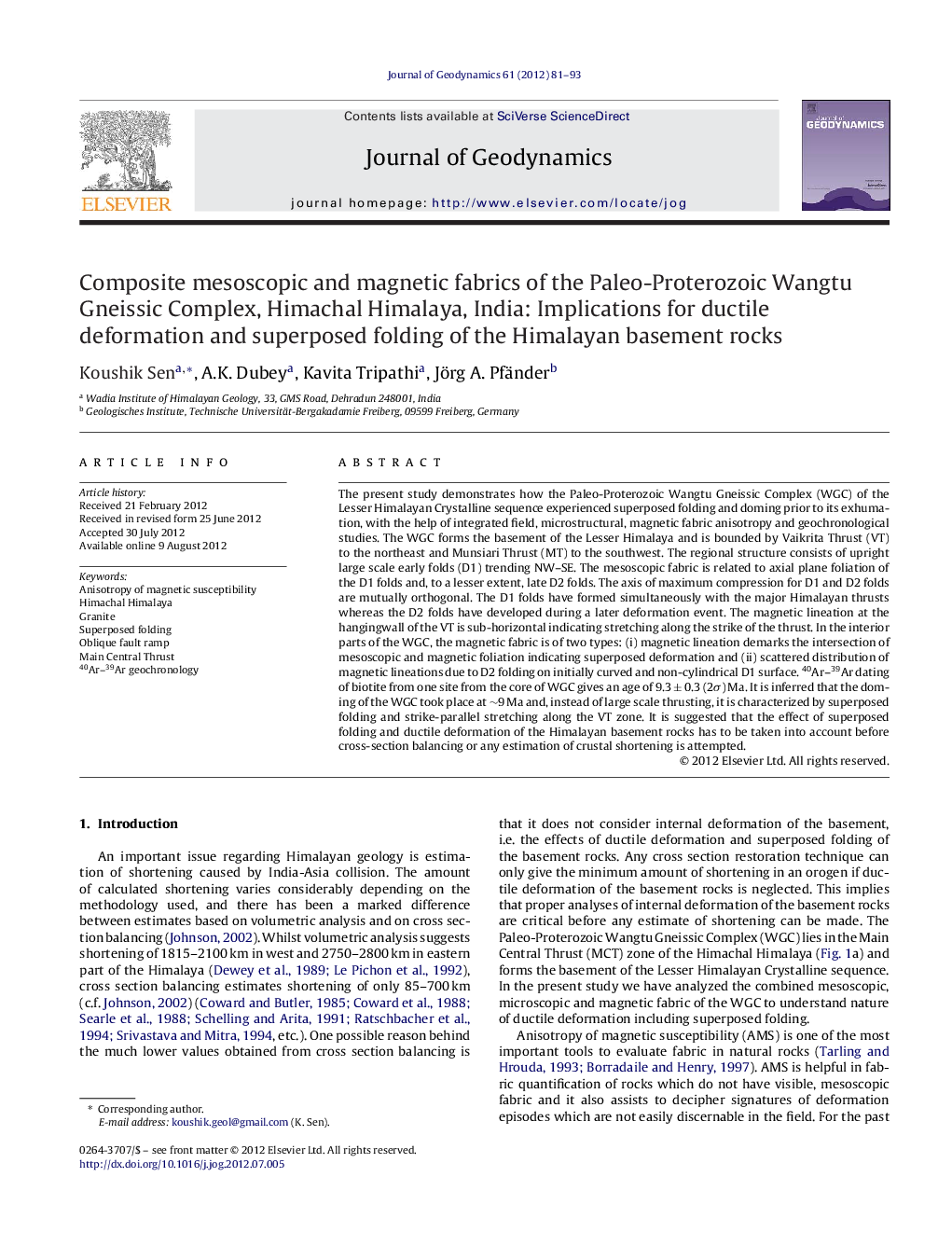| کد مقاله | کد نشریه | سال انتشار | مقاله انگلیسی | نسخه تمام متن |
|---|---|---|---|---|
| 4688272 | 1635788 | 2012 | 13 صفحه PDF | دانلود رایگان |

The present study demonstrates how the Paleo-Proterozoic Wangtu Gneissic Complex (WGC) of the Lesser Himalayan Crystalline sequence experienced superposed folding and doming prior to its exhumation, with the help of integrated field, microstructural, magnetic fabric anisotropy and geochronological studies. The WGC forms the basement of the Lesser Himalaya and is bounded by Vaikrita Thrust (VT) to the northeast and Munsiari Thrust (MT) to the southwest. The regional structure consists of upright large scale early folds (D1) trending NW–SE. The mesoscopic fabric is related to axial plane foliation of the D1 folds and, to a lesser extent, late D2 folds. The axis of maximum compression for D1 and D2 folds are mutually orthogonal. The D1 folds have formed simultaneously with the major Himalayan thrusts whereas the D2 folds have developed during a later deformation event. The magnetic lineation at the hangingwall of the VT is sub-horizontal indicating stretching along the strike of the thrust. In the interior parts of the WGC, the magnetic fabric is of two types: (i) magnetic lineation demarks the intersection of mesoscopic and magnetic foliation indicating superposed deformation and (ii) scattered distribution of magnetic lineations due to D2 folding on initially curved and non-cylindrical D1 surface. 40Ar–39Ar dating of biotite from one site from the core of WGC gives an age of 9.3 ± 0.3 (2σ) Ma. It is inferred that the doming of the WGC took place at ∼9 Ma and, instead of large scale thrusting, it is characterized by superposed folding and strike-parallel stretching along the VT zone. It is suggested that the effect of superposed folding and ductile deformation of the Himalayan basement rocks has to be taken into account before cross-section balancing or any estimation of crustal shortening is attempted.
► The mesoscopic and magnetic fabrics of the WGC indicate late stage superposed folding (D2) on initially undulatory surfaces of early (D1) folds.
► The magnetic fabric of the WGC does not show any signature of thrusting but strike parallel stretching in the thrust zone near the VT.
► In its interior part, the magnetic fabric of the WGC indicates random orientation due to superposed folding of non-cylindrical early folds.
► Presence of oblique fault ramps has a significant role in controlling the geometry of deformed structures in an area.
► 40Ar–39Ar dating of biotite indicates that the D2 deformation event and development of present magnetic fabric is not older than ∼9 Ma.
Journal: Journal of Geodynamics - Volume 61, October 2012, Pages 81–93